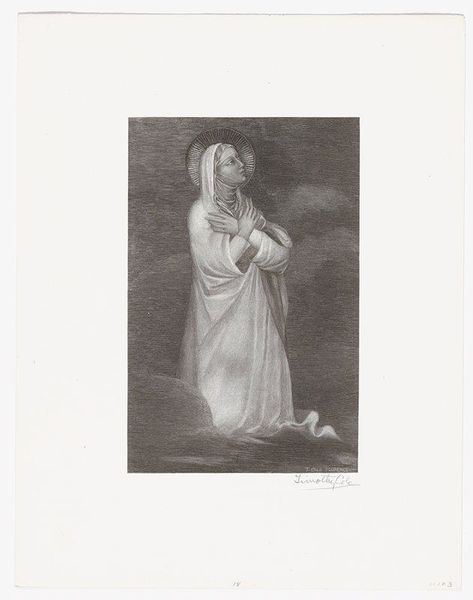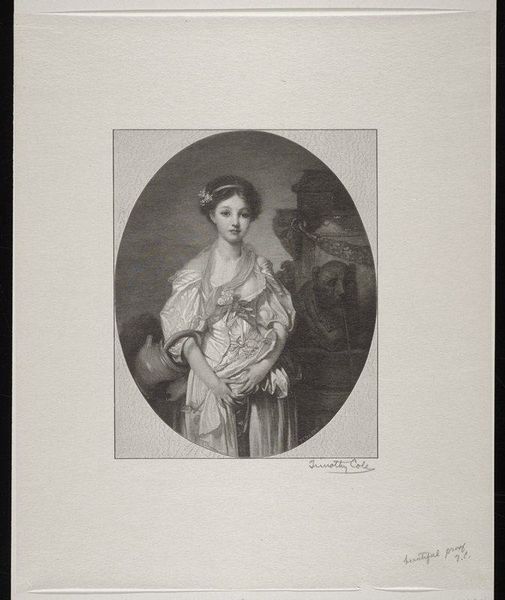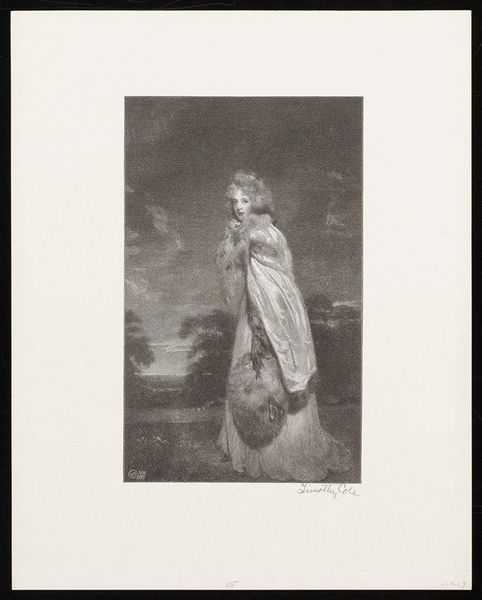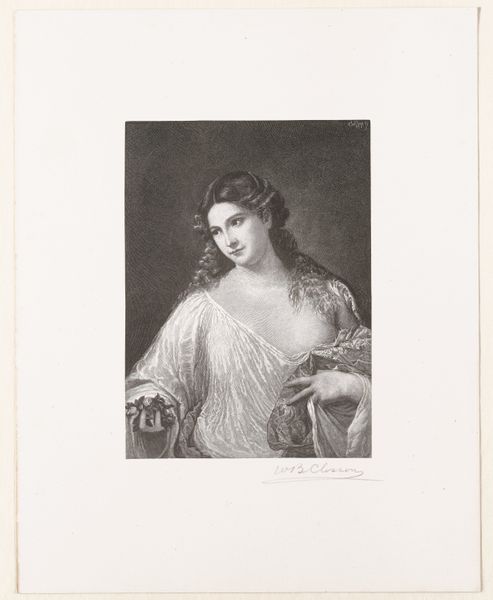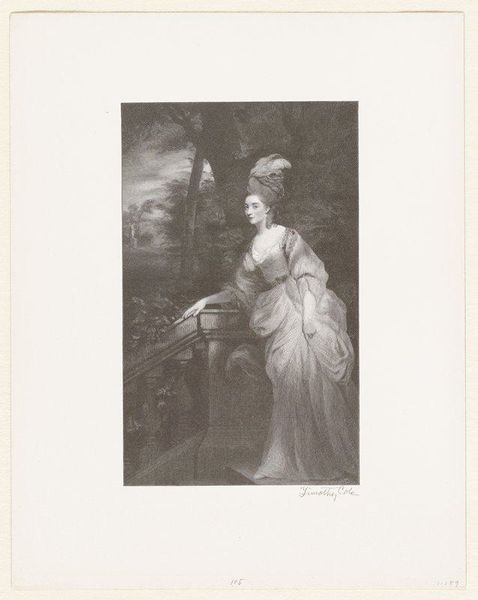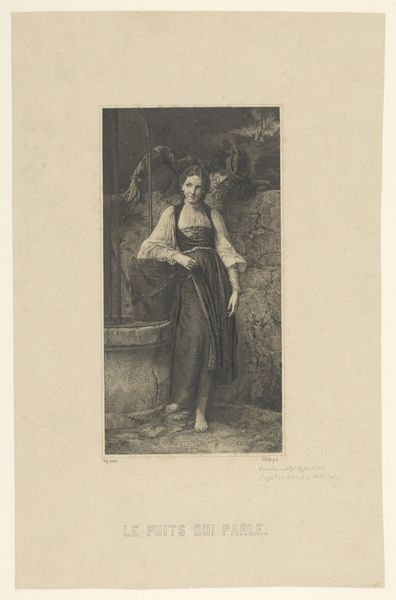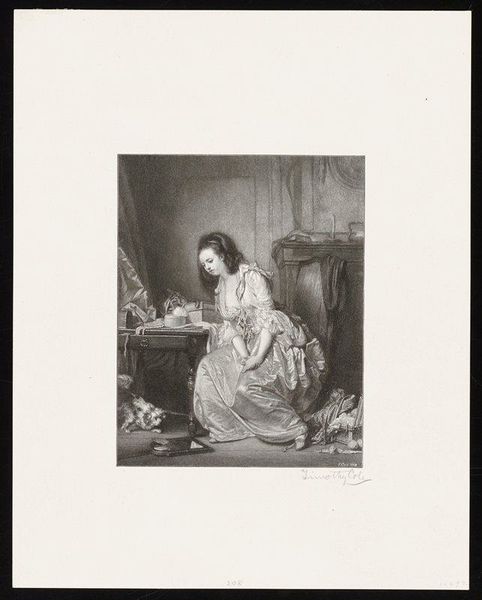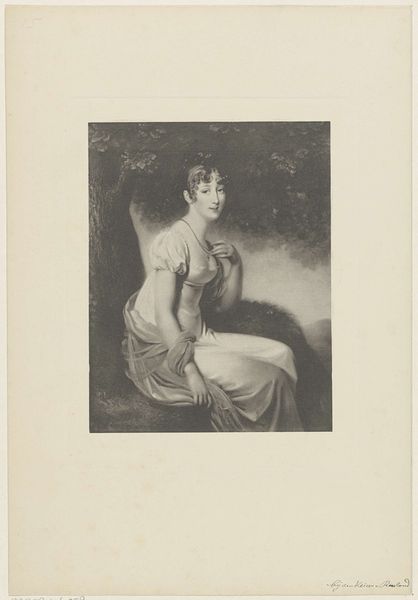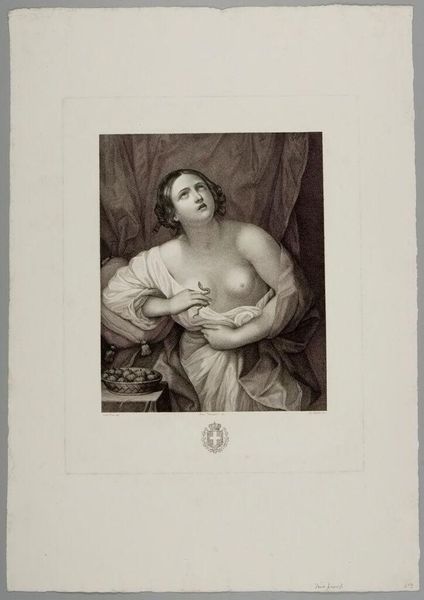
Dimensions: 7 5/8 x 5 1/4 in. (19.37 x 13.34 cm) (image)11 15/16 x 9 1/2 in. (30.32 x 24.13 cm) (sheet)
Copyright: No Copyright - United States
Curator: Immediately, I see an arresting study in contrasts; light and shadow, texture and smoothness. There is a tactile quality, despite it being a print. Editor: Indeed. What we're looking at is Timothy Cole’s "Sacred and Profane Love," created around 1895, currently housed at the Minneapolis Institute of Art. It's a wood-engraving print, which reproduces an earlier Renaissance painting of the same name, circa 1514, by Titian. Curator: I find Cole's wood-engraving a particularly evocative medium here, capturing the weight of tradition it evokes, the symbolic duality it explores, and the way these archetypes endure in our collective psyche. What associations does the title conjure for you, and does this representation reinforce or challenge such dualism? Editor: The title presents an immediate binary, but I am drawn more to the way Cole—and Titian before him—visualizes them. One figure is fully clothed and modest while the other, unclothed, occupies an overtly eroticized position. I see a connection to broader narratives around how women's bodies, particularly those of European descent, have been historically scrutinized. Is this image about celebrating love in all its forms, or about regulating and controlling female sexuality? Curator: I see the seated, draped figure as representing earthly love – fecundity, stability, while the bare-breasted figure with the rose is indicative of divine love, contemplation, spirituality. Editor: Is the opposition here reinforcing traditional power structures? The “sacred” seems reserved and demure, almost complicit in its containment, while the “profane” appears as exposed vulnerability. Even with the roses, the message still seems laced with control and judgment. Curator: The vase feels symbolic here, doesn't it? It appears to be classical in design and sits upon the partition separating the foreground from the landscape, potentially symbolizing the boundary or separation between different planes of existence. This vase might reflect shared or contested notions of love throughout civilizations. The act of carrying forward traditions, whether embraced or reinterpreted. Editor: These observations deepen my questions further. Thank you for the chance to revisit not just the imagery, but the ingrained systems that influence them and continue influencing what and how we value art, history, and expression today. Curator: Yes, indeed; it serves as a potent reminder of how these symbolic frameworks persist and evolve through creative engagement, continuing their quiet power to impact cultural narratives for us, as a collective.
Comments
No comments
Be the first to comment and join the conversation on the ultimate creative platform.
